Garden Fence Cover Up Ideas: Creative Ways to Beautify Your Yard
Looking to spruce up your garden and keep it private? Covering up an old or unattractive fence can transform your outdoor space into a cozy retreat. Whether you’re growing flowers, creating a lively backdrop, or just looking for extra seclusion, there are plenty of ways to achieve this.
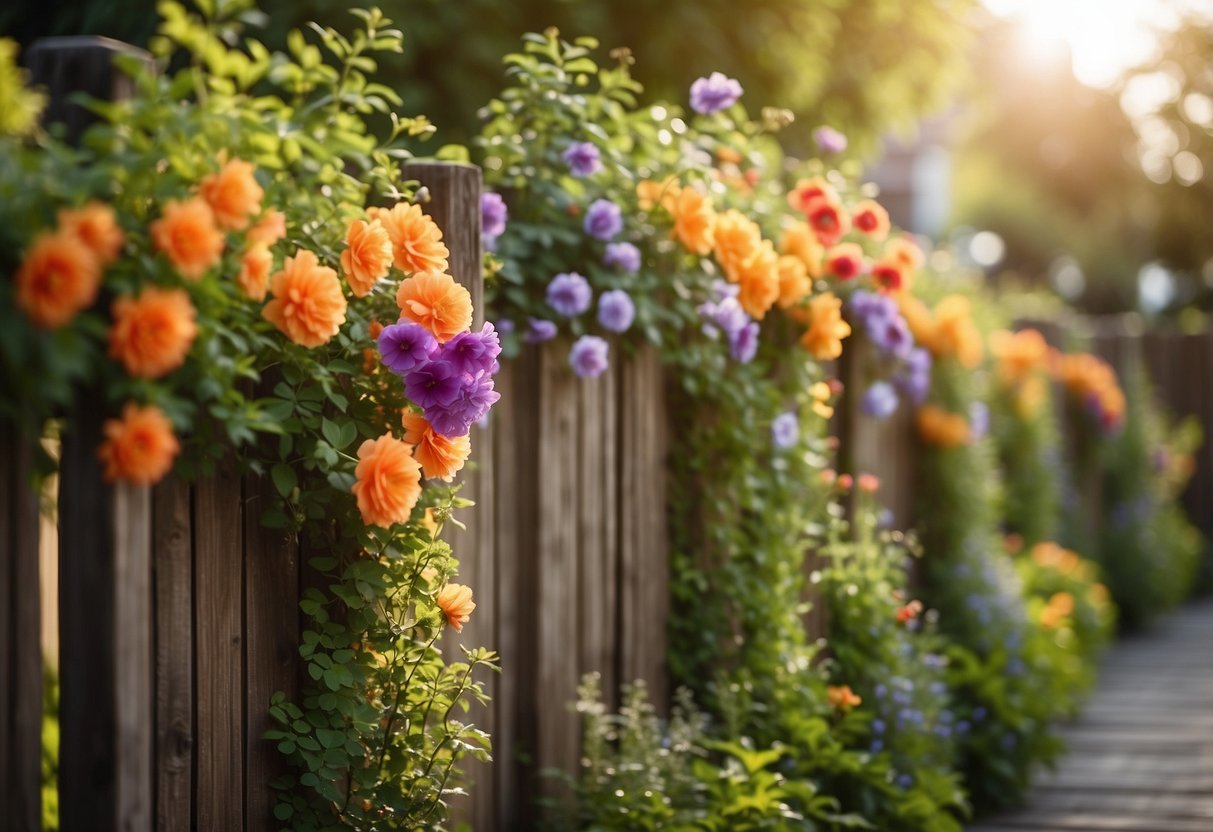
How can you enhance the look and feel of your garden using easy and effective fence cover-up ideas? From using climbing plants to adding hanging planters, the possibilities are endless and can suit any style or budget.
1) Ivy Wall Coverage

Using ivy to cover a fence is a great idea for adding greenery. Ivy grows quickly and easily attaches to almost any surface, making it perfect for hiding an old or unattractive fence.
You should plant ivy about 12 inches apart. This spacing helps it spread out evenly and cover the fence more effectively. Make sure to water it regularly, especially when it’s getting started.
If the ivy plants are larger, you might need more space between them. Dig holes about 6 inches deep to plant each ivy, and loosen the roots before placing them in the ground. This helps the ivy settle and grow.
2) Bamboo Paneling

Bamboo paneling is a great way to add a natural look to your garden fence. It’s easy to install and versatile. The panels can be attached to an existing fence or used to create a new one.
Bamboo panels come in different styles, such as rolled or flat sections. This gives you options to match your garden’s design. Don’t forget to wash and seal the bamboo periodically to keep it looking fresh.
You can find many bamboo fence ideas that fit any yard or garden style. It’s eco-friendly and adds a unique touch to your outdoor space.
3) Lattice with Climbing Roses

Adding a lattice to your garden fence creates a beautiful backdrop for climbing roses.
Choose roses like the vibrant “New Dawn” or the romantic “Sally Holmes.”
The lattice provides strong support, allowing the roses to grow upwards and cover the fence.
With time, your garden will become a colorful and fragrant space.
4) Hanging Garden Pots

Hanging garden pots are an excellent way to add greenery to your fence. They are easy to install and can brighten up any dull space. You can use terracotta pots, metal containers, or even recycled items like old metal boxes.
Attach them securely to your fence with clamps or hooks. This idea works well for growing herbs, flowers, or even small fruits. Use different colors and sizes for a lively and dynamic display. Hanging garden pots are not only practical but also a stylish decoration for your garden.
5) Outdoor Art Panels
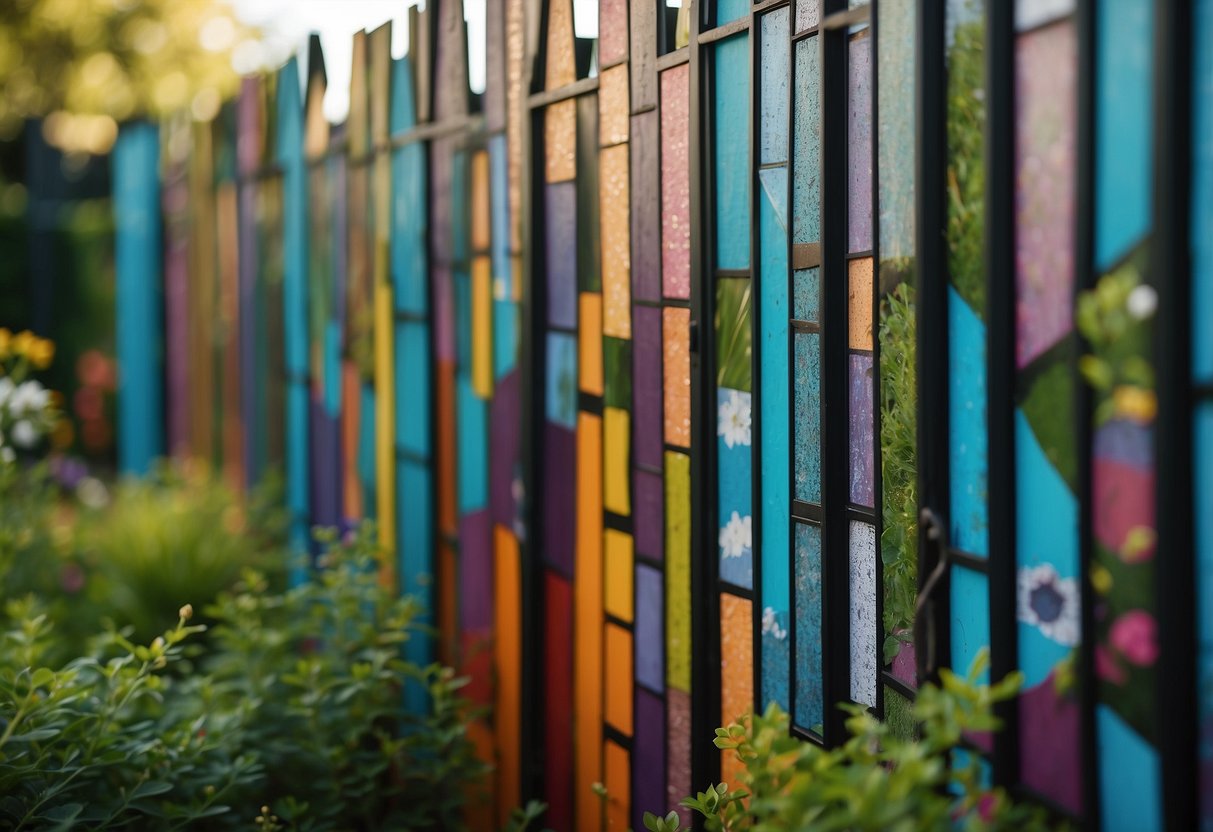
Outdoor art panels are a fantastic way to bring color and personality to your garden fence.
You can find panels in a variety of styles and materials, from metal to wood.
Consider choosing panels that reflect your favorite themes or colors.
Mounting these panels is usually simple and can create a stunning focal point in your garden.
6) Metal Trellis with Vines
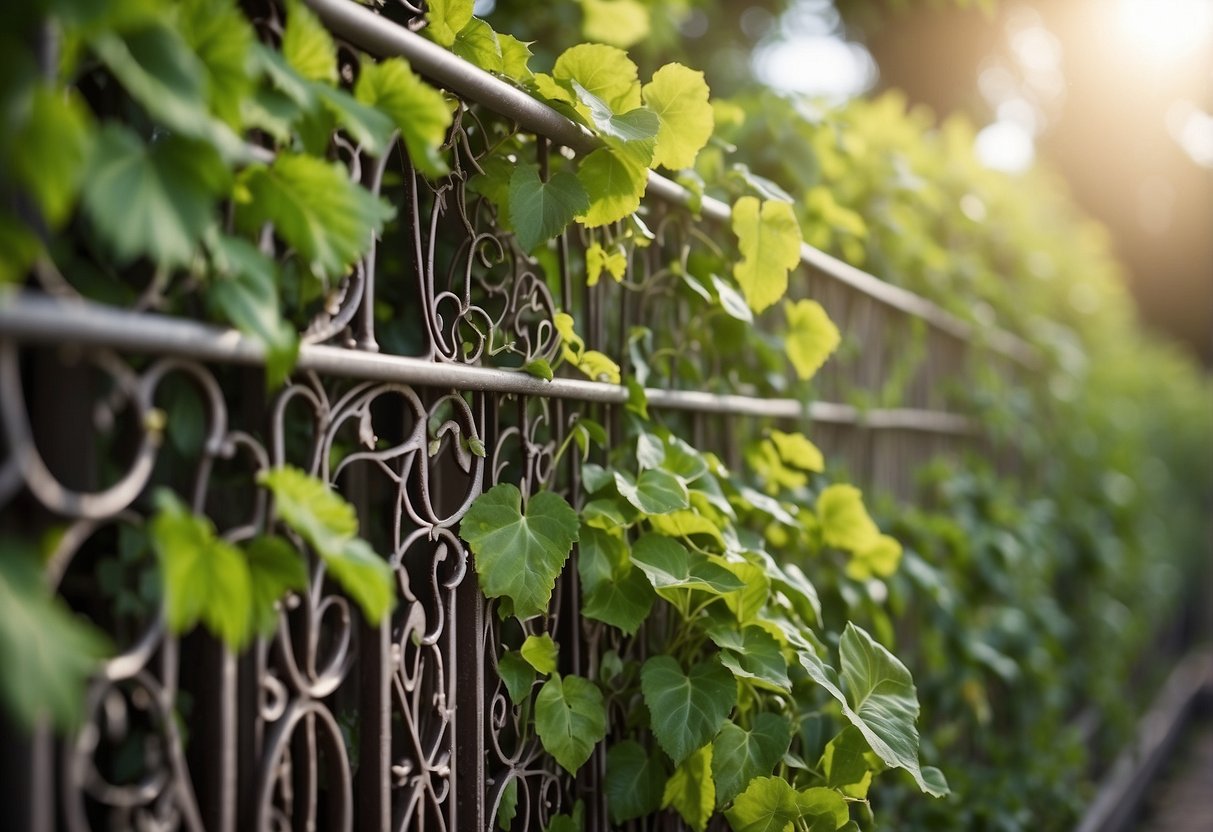
A metal trellis can be a fantastic addition to your garden. It adds both structure and style.
Metal trellises come in many designs. You can choose one that matches your garden’s look.
Pairing a metal trellis with vines like ivy or roses can create a beautiful, living wall. The vines will climb and cover the trellis, transforming your fence into a lush, green backdrop.
Check out some great ideas on Trellis Ideas for Vines and Climbing Plants.
7) Recycled Wooden Pallets

Recycled wooden pallets are a great option for covering up your garden fence. They are affordable and easy to find.
You can arrange the pallets vertically or horizontally to create a rustic look. This adds charm to your garden while being eco-friendly.
Pallets can also be painted in bright colors to give your garden a playful vibe. This adds a personal touch to your outdoor space. For more ideas, check out these DIY Pallet Garden Ideas.
8) Privacy Screens

Privacy screens are a great way to add a touch of seclusion to your outdoor space. They come in many styles and materials, like wood, metal, and even fabric.
Using screens can create a cozy atmosphere. For a boho look, try using flowy curtains that can be easily tied back.
For a more modern feel, wood or metal panels can be a sleek choice. You can even use laser-cut designs for an extra decorative touch.
Placement is key. Position them near your seating or lounging areas to block unwanted views and create a more intimate setting.
Check out some privacy screen ideas for more inspiration.
9) Vertical Garden

A vertical garden is a great way to add greenery to your fence. It maximizes space by allowing plants to grow upwards.
You can use a trellis, wall-mounted planters, or pocket pouches. This makes it easy to create a lush, green wall.
Consider plants like climbing roses or pole beans. They can quickly cover the fence with beautiful flowers and leaves.
10) Flowering Shrubs

Flowering shrubs are a great way to cover a garden fence. They add beauty with their blooms and can provide privacy.
Chinese fringe flower shrubs are a lovely choice with their white or pink flowers. They can grow tall and wide, making them perfect for fence lines.
Also, raspberry and blackberry bushes can be both decorative and useful, offering tasty fruits while covering your fence.
Types of Garden Fence Cover Ups
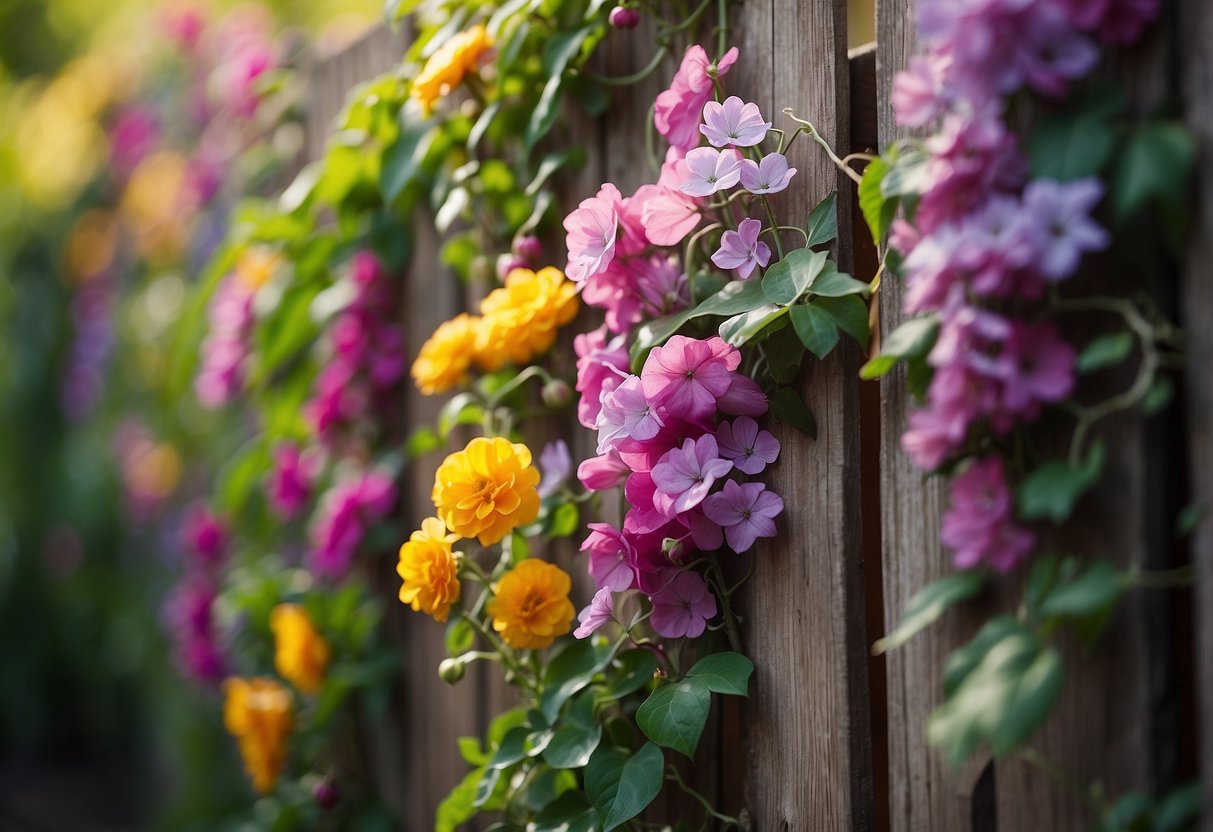
Covering up a garden fence can enhance the overall look of your outdoor space. You can choose from both natural and artificial options, each with its own benefits and characteristics.
Natural Solutions
Climbing Plants: Use climbing plants like climbing roses, clematis, jasmine, or honeysuckle. These plants grow upward and can transform a plain fence into a blooming wall. Fix wires or a trellis to guide the plants as they grow.
Fast-Growing Vines: Consider fast-growing vines such as ivy or morning glories. These vines quickly cover large areas and provide dense greenery. They are perfect if you need a quick cover-up solution.
Shrubs: Planting shrubs along the fence line offers a natural barrier that can also add color and texture. Opt for varieties that suit your climate and soil. You’ll enjoy both beauty and privacy.
Bamboo: For a tall and dense natural screen, bamboo is an excellent choice. It grows rapidly and can create a lush backdrop. Just make sure to plant it in pots or barriers to control its spread.
Artificial Options
Fence Panels: Install decorative fence panels for an instant upgrade. These come in various materials like wood, metal, or vinyl. You can choose designs that match your garden’s style and give a polished look.
Artificial Hedges: Use artificial hedges or greenery panels to mimic the look of live plants. They require no maintenance and stay green all year round. Artificial options are especially useful in shaded areas where real plants struggle to grow.
Wood Slats: Adding horizontal or vertical wood slats can modernize a fence. This option is customizable and can be painted or stained to fit your aesthetic. It can also add extra privacy to your garden.
Decorative Screens: Metal or plastic decorative screens can add artistic flair to your fence. These screens often feature intricate cut-out designs and can serve as focal points in your garden.
Choosing the right type of cover-up for your garden fence depends on your specific needs and the look you want to achieve. Whether you prefer the beauty of natural elements or the ease of artificial solutions, there are plenty of options to enhance your garden’s appearance.
Choosing the Right Materials
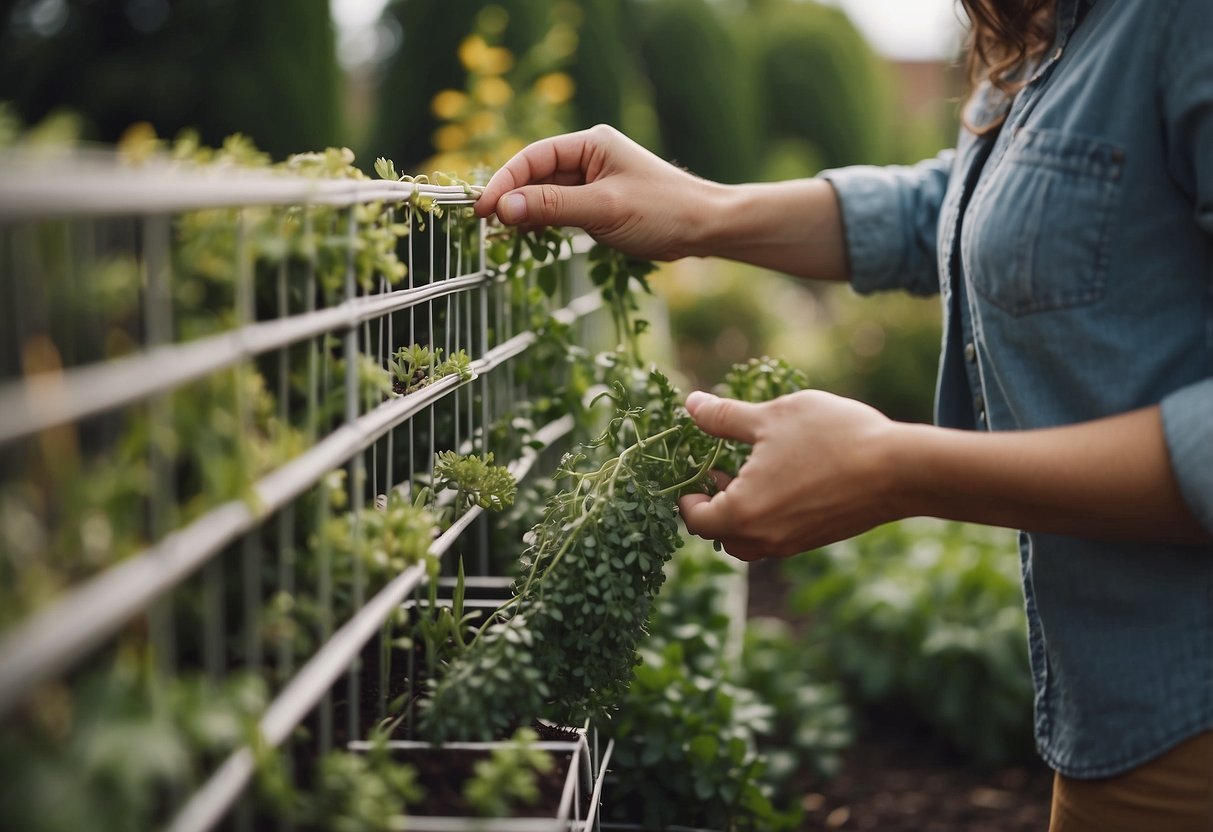
Selecting the best materials for your garden fence cover-up is crucial. You need to consider both how durable and easy to maintain the material is, as well as how it looks and fits with your garden’s design.
Durability and Maintenance
When choosing materials for your garden fence, think about how well they will withstand the elements. For instance, cedar wood is popular because it resists rot and insects. It can last a long time with minimal upkeep.
Vinyl fencing is another great option. It’s resistant to weather, doesn’t rot, and is easy to clean. You just need to wash it occasionally to keep it looking new.
For those who prefer metal, aluminum offers durability without rusting, unlike iron which requires regular painting and maintenance. Choose materials that won’t need constant repairs, especially if you want a low-maintenance garden.
Aesthetic Appeal
The look of your garden fence matters as much as its strength. Wooden fences give a natural and warm feel. They can be painted or stained to match your garden’s style.
Lattice-style fencing can add a decorative touch while supporting climbing plants like clematis or ivy. This option blends function and beauty, providing both coverage and a way to showcase your favourite plants.
For a modern look, horizontal slats in black or grey can add a sleek, contemporary vibe. Wrought iron fences bring a classic and elegant aesthetic but need more maintenance to prevent rust. Balance beauty with practicality to create a pleasing, functional garden space.
Installation Tips and Tricks

Installing a garden fence cover-up requires careful planning and the right tools. You should focus on measuring your space accurately, gathering materials, and following step-by-step techniques.
Planning and Preparation
Before you begin, measure the length and height of your fence. This ensures you purchase the correct amount of materials. Sketch a rough design of your planned cover-up. Consider existing plants and yard layout.
Make a list of needed materials, such as wood, metal, or vinyl panels, and any decorative elements like hanging planters or climbing plants. Double-check local regulations about fence heights or styles in your community. It helps to visualize everything before starting the installation.
Finally, clear the area around your fence. Remove any obstacles or debris that might get in the way. Check the weather forecast to choose a day with clear, dry weather. This ensures materials stay in good condition.
Tools and Techniques
Gather all necessary tools before starting. Common tools include a measuring tape, level, drill, hammer, nails, screws, and a saw. For climbing plants or vines, you may need plant supports or trellises.
When attaching panels or cover materials, ensure they are level and evenly spaced. Use a spirit level to keep everything straight. Secure each panel or material firmly to prevent it from shifting or falling.
For hanging planters, use sturdy hooks or brackets that can support the weight of soil and plants. Space them evenly to create a balanced look. If installing a trellis, ensure it is firmly attached at multiple points to handle the weight of growing plants.
Using the right tools and techniques will result in a stable, attractive fence cover-up. This makes your garden both functional and beautiful.







